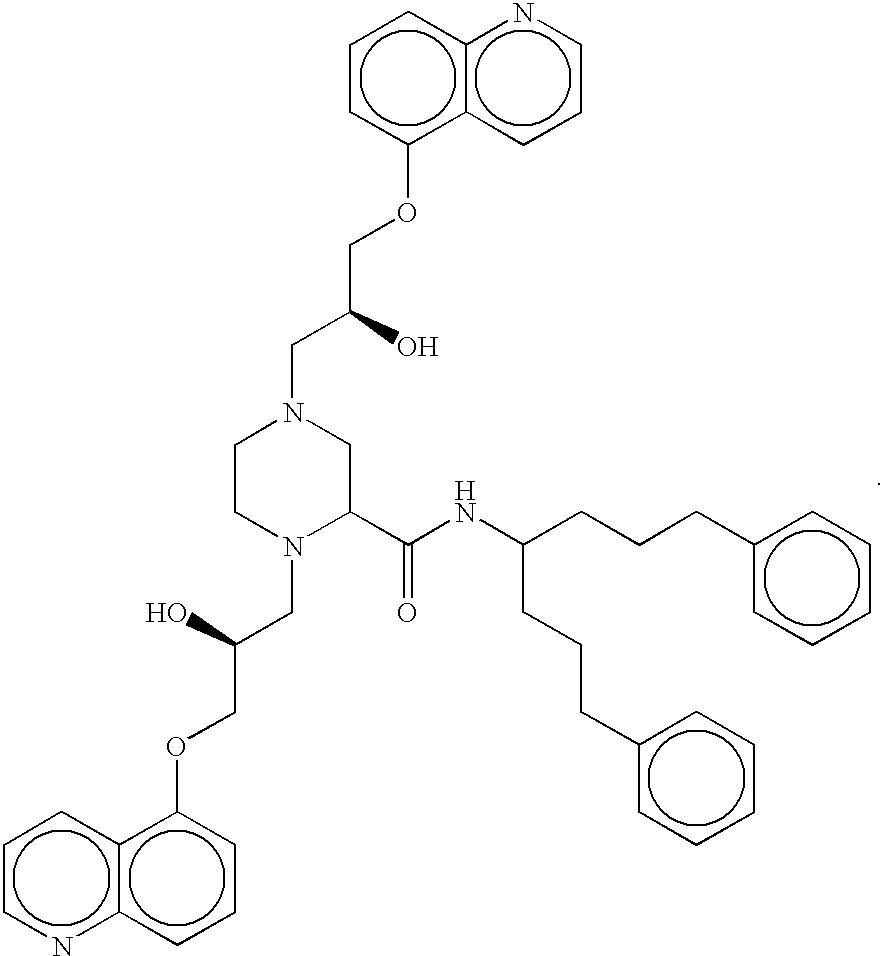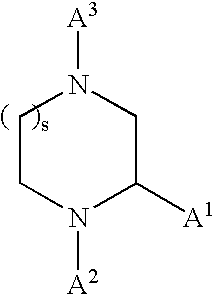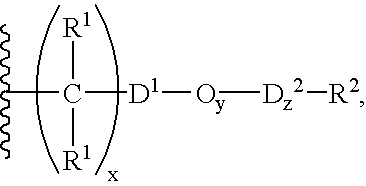Substituted heterocyclic compounds for treating multidrug resistance
a multi-drug resistance and heterocyclic compound technology, applied in the field of compound for treating multi-drug resistance, can solve the problems of affecting the oral bioavailability of many nutrients and drugs, pgp adversely affecting the penetration of many drugs through the blood-brain barrier, etc., to prevent the development of multi-drug resistance, treat or prevent p-glycoprotein-mediated mdr and mrp1-mediated mdr
- Summary
- Abstract
- Description
- Claims
- Application Information
AI Technical Summary
Benefits of technology
Problems solved by technology
Method used
Image
Examples
example 1
1-(3,4-Dimethoxybenzenesulfonyl)-4-(tert-butoxycarbonyl)-piperazine-2-carb- oxylic Acid (1)
[0151] 27
[0152] Piperazine-2-carboxylic acid dihydrochloride (12.00 g; 59.1 mmol) is dissolved in a mixture of dioxane (120 mL) and water (60 mL). 50% aqueous NaOH solution (6.4 mL) is added followed by di-tert-butyl dicarbonate (14.40 g; 66.0 mmol). After 5 hours the reaction mixture is treated with triethylamine (12.2 g; 120.3 mmol) and 4-(dimethylamino)pyridine (0.72 g; 5.91 mmol), followed by the addition of 3,4-benzenesulfonyl chloride (13.99; 59.1 mmol). The reaction mixture is stirred at ambient temperature overnight, then concentrated under reduced pressure at 45.degree. C. The residue is diluted with water and poured onto ice-cold 1N HCl (300 mL). The aqueous solution is extracted with ethyl acetate (2.times.400 mL). The combined organic extracts are washed with brine, dried over magnesium sulfate, filtered and concentrated under reduced pressure to afford the desired product as a whi...
example 2
1-(3,4-Dimethoxybenzenesulfonyl)-4-(tert-butoxycarbonyl)-piperazine-2-carb- oxylic Acid (4-benzhydrylpiperazine-1-yl)amide (2)
[0153] 28
[0154] 1-(3,4-Dimethoxybenzenesulfonyl)-4-(tert-butoxycarbonyl)-piperazine- -2-carboxylic acid (1) (10.29 g; 23.9 mmol) is dissolved in methylene chloride (250 mL) at ambient temperature. 1-(Diphenylmethyl)piperazine (7.24 g; 28.7 mmol), N,N-diisopropylethylamine (6.80 g; 52.6 mmol) and PyBOP(14.92 g; 28.7 mmol) are added sequentially. The reaction is stirred for 5 hours at room temperature, then concentrated under reduced pressure. The residue is purified via silica gel chromatography (30%.fwdarw.50% ethyl acetate in hexanes) affording the desired product as a solid foam. CIMS: MH.sup.+ 665
example 3
1-(3,4-Dimethoxybenzenesulfonyl)piperazine-2-carboxylic Acid (4-benzhydrylpiperazine-1-yl)amide (3)
[0155] 29
[0156] 1-(3,4-Dimethoxybenzenesulfonyl)-4-(tert-butoxycarbonyl)-piperazine- -2-carboxylic acid (4-benzhydrylpiperazine-1-yl)amide (2) (12.16 g; 18.3 mmol) is dissolved in methylene chloride (80 mL) at ambient temperature. Trifluoroacetic acid (60 mL) is added in a slow stream, and the solution is stirred for 4 hours at ambient temperature. The solution is concentrated in vacuo at 40.degree. C. The residue is dissolved in methylene chloride (200 mL) and poured onto saturated sodium bicarbonate solution. The pH is adjusted to 9 with saturated potassium carbonate solution. The mixture is shaken and the layers separated. The water layer is extracted with methylene chloride (2.times.100 mL). The combined organic extracts are washed with water, dried over MgSO.sub.4, filtered, and concentrated in vacuo affording the desired product as a white solid. CIMS: MH.sup.+ 565
PUM
| Property | Measurement | Unit |
|---|---|---|
| melting point | aaaaa | aaaaa |
| melting point | aaaaa | aaaaa |
| temperature | aaaaa | aaaaa |
Abstract
Description
Claims
Application Information
 Login to View More
Login to View More - R&D
- Intellectual Property
- Life Sciences
- Materials
- Tech Scout
- Unparalleled Data Quality
- Higher Quality Content
- 60% Fewer Hallucinations
Browse by: Latest US Patents, China's latest patents, Technical Efficacy Thesaurus, Application Domain, Technology Topic, Popular Technical Reports.
© 2025 PatSnap. All rights reserved.Legal|Privacy policy|Modern Slavery Act Transparency Statement|Sitemap|About US| Contact US: help@patsnap.com



